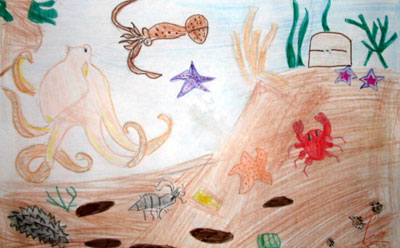AMAZING COUNTRIES

GEOGRAPHY OF INDIA
| Geography of Russia |
|
  
|
||||||||||
GEOGRAPHY OF INDIA The Geography of India describes the geographic features of India, a country in South Asia. India lies largely on the Indian Plate, the northern portion of the Indo-Australian Plate, whose continental crust forms the Indian subcontinent. The country is situated north of the equator between 8°4' and 37°6' north latitude and 68°7' and 97°25' east longitude. It is the seventh-largest country in the world, with a total area of 3,287,240 square kilometres.
|
|||||||||||
PHYSICAL FEATURES OF INDIA The Himalayan Mountains : The Himalayas, geologically young and structurally fold mountains stretch over the northern borders of India. These mountain ranges run in a west-east direction from the Indus to the Brahmaputra. The Himalayas represent the loftiest and one of the most rugged mountain barriers of the world. The Northern Plains : This plain is formed of alluvial soil. The deposition of alluvium in a vast basin lying at the foothills of the Himalaya over millions of years, formed this fertile plain. It spreads over an area of 7 lakh sq. km. The plain being about 2400 Km long and 240 to 320 Km broad, is a densely populated physiographic division. The Northern Plain is broadly divided into three sections. The Satluj Basin, The Ganga Basin & The Brahmaputra Basin. The Peninsular Plateau : The plateau has broad and shallow valleys and rounded hills. This plateau consists of two broad divisions, namely, the Central Highlands and the Deccan Plateau. The Deccan Plateau is a triangular landmass that lies to the south of the river Narmada. The Indian Desert : The Indian desest lies towards the western margins of the Aravali Hills. It is an undulating sandy plain covered with sand dunes. This region receives very low rainfall below 150 mm per year. It has arid climate with low vegetatin cover. Streams appear during the rainy season. The Coastal Plains : The Peninsular plateau is stretch of narrow coastal strips, running along the Arabian Sea on the west and the Bay of Bengal on the east. The western coast, lies between the Western Ghats and the Arabian Sea, is a narrow plain. It consists of three sections. The northern part of the coast is called the Konkan (Mumbai – Goa), the central stretch is called the Kannad Plain while the southern stretch is referred to as the Malabar coast The plain along the Bay of Bengal are wide and level. In the northern part, it is referred to as the Northern Circar, while the southern part is known as the Coromandal Coast. The Islands : Lakshadweep Islands group are lying close to the Malabar coast of Kerala. This group of islands is composed of small coral isalnds. Kavaratti island is capital of Lakshadweep. There is chain of islands located in the Bay of Bengal extending from north to south. These are Andaman and Nicobar islands. They are bigger in size and are more numerous and scattered. The entire group of islands is divided into two broad categories – The Andaman in the north and the Nicobar in the south. Port Blair is the capital of Andaman and Nicobar Islands. |
|||||||||||
CLIMATE OF INDIA The climate of India resolves into six major climatic subtypes; their influences give rise to desert in the west, alpine tundra and glaciers in the north, humid tropical regions supporting rain forests in the southwest, and Indian Ocean island territories that flank the Indian subcontinent. The Thar Desert in the northwest and the Himalayas in the north work in tandem to effect culturally and economically break - all monsoonal regime |
|||||||||||
RIVERS OF INDIA The Indian River Systems can be divided into four categories – the Himalayan, the rivers traversing the Deccan Plateau, the Coastal and those in the inland drainage basin |
|||||||||||
LAKES OF INDIA 1.Jag Mandir Lake-Rajasthan
|
|||||||||||

